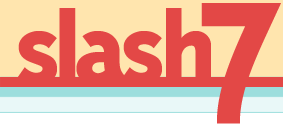Design is not about solving problems.
There is an inherent problem with the definition of design as “solving problems”:
There isn’t a problem to solve.
There is only the assumption that things present themselves, walk up to you and say “Hi! I’m a problem. Solve me.”
Life doesn’t announce itself. Problems don’t self-identify. Neither do their best-seller-management-book alternate, opportunities. In fact, opportunities don’t actually exist (and neither do problems). They are both ways that we project our need for order on a world that has none. At any time, you—a sovereign being—are free to act.
By framing design as a way to devise solutions to problems, you change it from an inherently proactive act to a reactive one.
And that is a terrible loss.








Agreed. Design is about identifying what the end goal is in the first place. Calling this a "problem" inherently creates an attitude of negativity and instead of looking at a situation positively, it’s only a "solution" that must be created to solve this grave "problem".
It may just be a matter of semantics, but design is a process in which something that is not clear can become clear. It’s learning about the way in which things occur, and finding ways to make that better.
And that’s only the tip of the iceberg.
Amy, I have to disagree. If design is not looked at as a problem to solve, then the final solution is likely to be three quarters of the way there, because by nature we will be satisfied that "this is one way of reaching the goal"
The problem can normally be defined as "How can I make the end goal easier to find".
Looking at design as a problem to solve forces us to re-evaluate our final solution – which has to be a positive?
I think what Amy said was going a bit further than that.
It’s not even a question of using the right semantics, it’s that there is nothing there, floating around, waiting for us to call it the problem. And designing a solution is also creating something that isn’t there.
So solution/problem/opportunity are all void. Don’t use one for the other, because none of them exist. There are only your present actions, and there will only be the outcome of these actions.
Design is a process in which something that is not clear can become clear. It is the learning in which things occur better and also there are ways to make it more better.
This is fun! 🙂
John, almost. You should think just a wee bit more abstractly 😉
pngl, you got it. 🙂
Paul, let’s see if I can explain this better.
You mentioned that if you don’t define your driving problem, your solution will only be 3/4 of the way there. But I’m talking about even more of a 100,000 Ft view than that:
If you get rid of the framing question of a "problem" you cannot have a half-baked "solution," because a solution is not a solution without a problem to solve. Solutions can’t exist independent of a problem. Semantically, at least, in English 🙂
The problem (ha) is that once you take a look at reality and say "THIS is THE problem," you close yourself to many, many avenues of potential thought & action. For all you know, you, in your limited human wisdom, choose the completely wrong "problem." And the thing you come up with as a solution may fully & completely address that "problem" while still being much lesser than what you could have come up with if you hadn’t framed the situation at all.
By defining the problem, you pretty much already know the end result. Once you define the problem, you limit your potential responses to a select few, over the entire universe of possibility.
This is all pretty vague (makes sense to anyone who knows about cognitive framing, or familiarity with the true process of scientific innovation, or who, say, reads George Lakoff) but let me see if I can’t come up with a concrete example that makes it clearer.
How about this: if you start the design process by asking the question "How can we make blogs better?" you close yourself to the idea that perhaps the best ‘solution’ is to do away with "blogs" altogether.
You have framed the question in terms of blog-software-but-better. The frame limits your thinking severely.
This is a problem in science, too, with the "Scientific Process" as we’re taught it in middle school. If you begin every experiment with a firm hypothesis, you will likely as not be unable to see other side effects which don’t pertain to your main goal. The hypothesis serves as a nice, solid set of blinders!
So many amazing scientific discoveries have been accidental or incidental to the actual topic of research at the time—mirror neurons are one recent example. The researchers left the monkey wired up in between experiments and, by happenstance, noticed that something funky happened when the monkey saw a researcher holding a piece of fruit during the downtime.
What if they had hewed more closely to their original hypothesis and ignored this "junk data"? It had nothing to do with the purpose of the experiment. And yet because they paid attention, because their framing was weak for them, they made this incredibly revolutionary discovery about the brain.
This is not a lone example. It is repeated thousands of times a day, wherever people predetermine what they’re looking for.
Another way to get around cognitive narrowing is to progress from a perceived problem and seek the underlying user need. Your client may say "we need a better website comment feature," but then you come back to them and say "let’s find out the top reasons customers need to write you, and figure out a way for them to do it better and easier.
Just wanted to drop a note to say thanks! This should have been obvious to me, but it was not. So many different ways that we put ourselves in the reactionary stance.
I see said the blind man..Im getting you know more with your example, interestingly I’ve been reading a few books on creativity, and they seem to talk about the "firm hypothesis" you mentioned..Sorry to go a bit off topic but here’s an interesting example we can all learn from..
A teacher puts a dot on a blackboard, and asks pre-schoolers what it is. They come up with 100 different things that it may be –
However he ask middle school kids the same thing and they come up with ONE solution – Its a dot on a board. And dont offer any other alternatives.
They have been conditioned to look for the correct answer, limiting their thinking.
Great post! I think client expectations often force us into this box. Once you can cross that gap to where clients recognize your creative abilities at a business level–or you simply work on your own projects–then this idea can really be applied.
In practice I think this is like a child continuously asking "Why?". Each time you bring yourself to a more abstract "problem". At some point you may find a suitable problem to solve, or reject the problem entirely. And of course this evaluation should not remain a fixed quantity either.
"By defining the problem, you pretty much already know the end result." Couldn’t be said better. And I agree that this problem/solution dilemma has become the designer’s way out. It’s a limit that defines our "comfort zone".
But I wouldn’t agree with your notion of "proactive design". Design is reactive. To environment, culture, technology, evolution, anthropometry, regulations, needs, desires etc. And the designer is the catalyst to that reaction.
If we say proactive expression/exploration, then we’re talking about "art", not design.
Thanks for the great post.
http://www.youtube.com/watch?v=xb8idEf-Iak
Design is about solving problems. Listen to the first part of this interview.